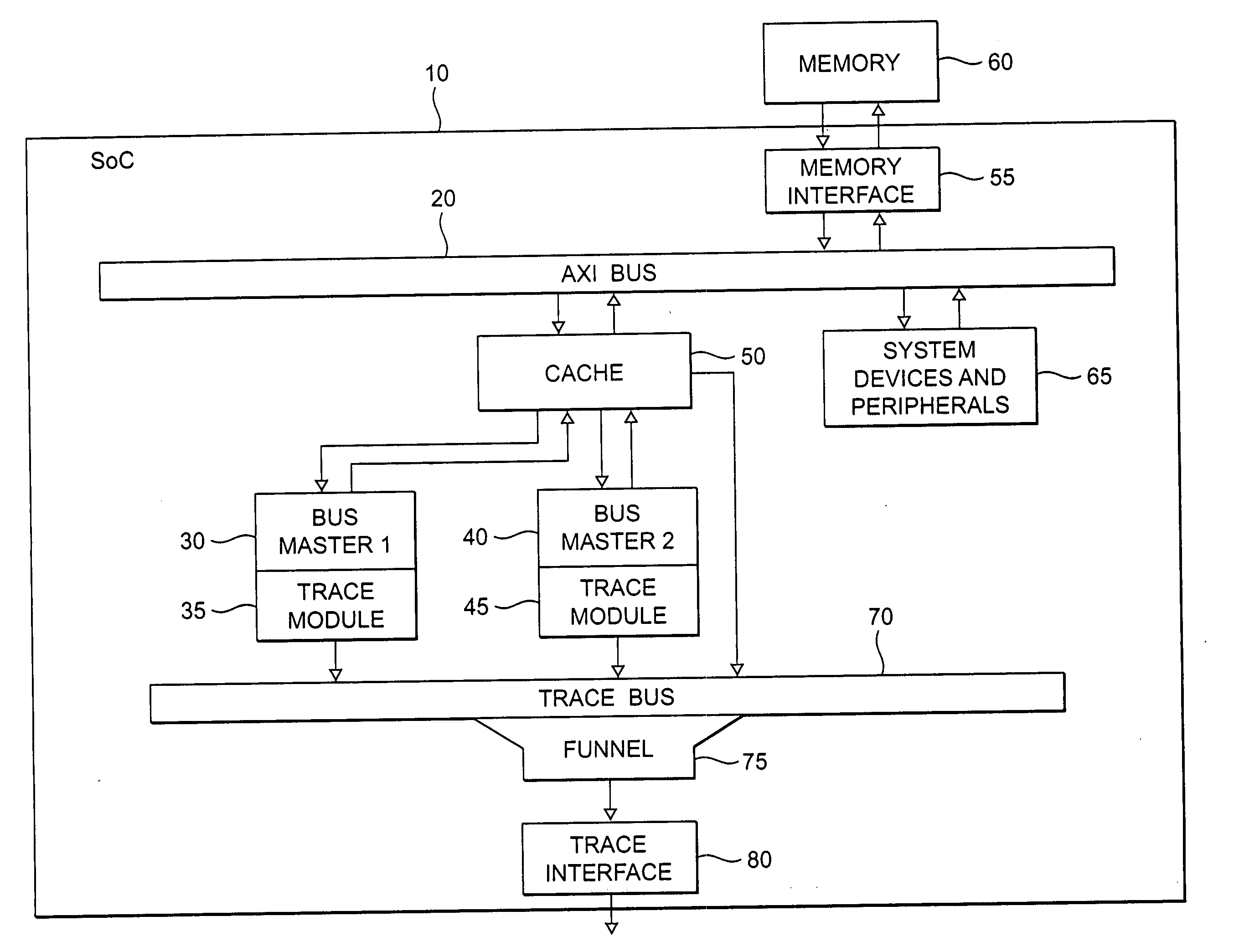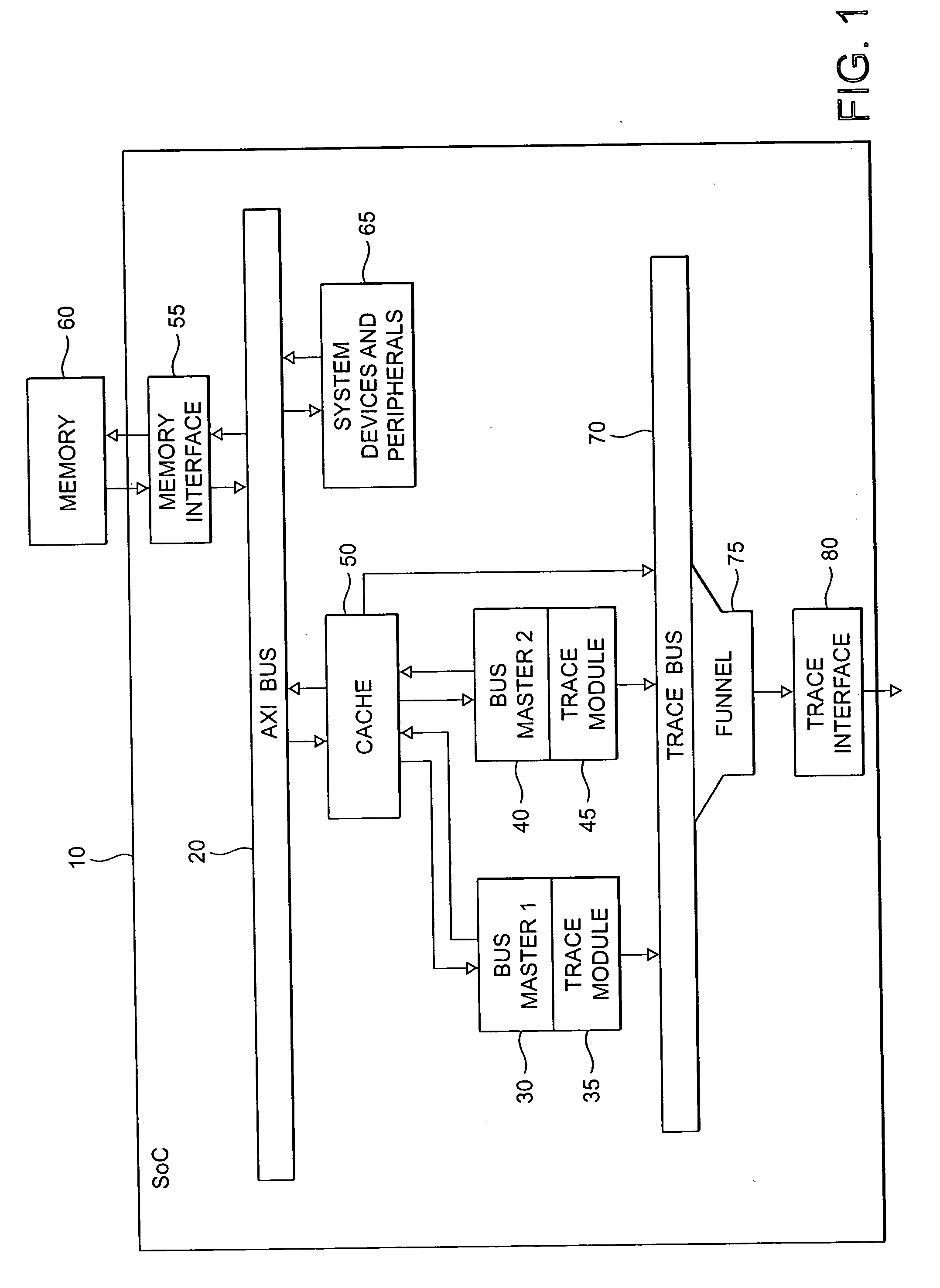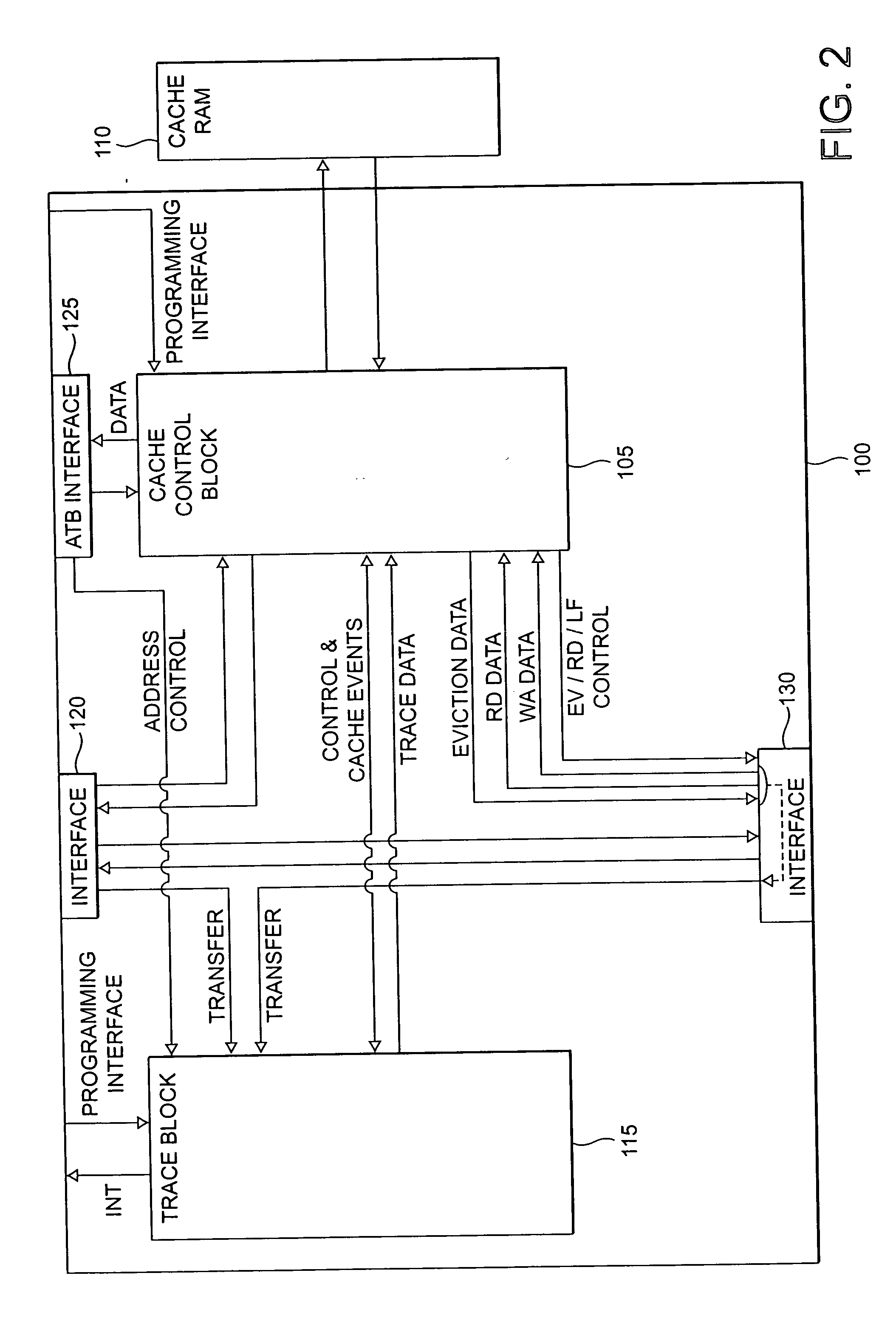Storage of trace data within a data processing apparatus
a data processing apparatus and data processing technology, applied in the field of data processing apparatus and method for storing trace data, can solve the problems of increasing complexity and size of the associated monitor logic, increasing complexity and size of the interconnecting bus network, and inability of etm to trace information about the actual transactions being routed from that processor core, or indeed from other master devices, onto the bus
- Summary
- Abstract
- Description
- Claims
- Application Information
AI Technical Summary
Benefits of technology
Problems solved by technology
Method used
Image
Examples
Embodiment Construction
[0037]FIG. 1 is a block diagram illustrating a data processing apparatus 10 in accordance with one embodiment of the present invention. In this example, the data processing apparatus is a SoC incorporating a bus 20 having a number of master devices and slave devices coupled thereto. A master device is a device that initiates a transaction, and a slave device is a device which responds to a transaction. The bus 20 can take a variety of forms, but in FIG. 1 is assumed to be a bus conforming to the Advanced Microcontroller Bus Architecture (AMBA) AXI (Advanced extensible Interface) specification developed by ARM Limited, Cambridge, England. As shown in FIG. 1, two bus master devices 30, 40 are coupled to the bus 20 via a cache 50, such a cache often being referred to as a level 2 cache (a level 1 cache often being incorporated within the individual bus masters).
[0038] As shown in FIG. 1, the SoC 10 is connected to an external memory 60 via a memory interface 55 coupled to the bus 20, ...
PUM
 Login to View More
Login to View More Abstract
Description
Claims
Application Information
 Login to View More
Login to View More - R&D
- Intellectual Property
- Life Sciences
- Materials
- Tech Scout
- Unparalleled Data Quality
- Higher Quality Content
- 60% Fewer Hallucinations
Browse by: Latest US Patents, China's latest patents, Technical Efficacy Thesaurus, Application Domain, Technology Topic, Popular Technical Reports.
© 2025 PatSnap. All rights reserved.Legal|Privacy policy|Modern Slavery Act Transparency Statement|Sitemap|About US| Contact US: help@patsnap.com



